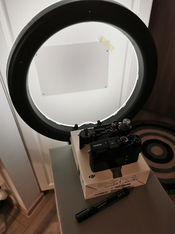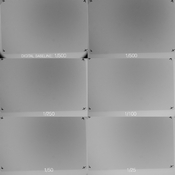Niglyn
Member
Thank you for the in depth explanation once again!
What I'm really interested to know is if Laser 1 în the printed results in fact gives the results for the opening curtain. Meaning am I correct to adjust first curtain based on Laser 1 values or am I having it all wrong?
My lack of understanding derives from the fact that both lasers must be involved for the assessment of each / any curtain.
Laser 1 can only show the exposure it sees on the right side of the film gate.
Laser 2 can only show the exposure it sees on the left side of the film gate.
Neither Laser 1 or two can measure the travel time of the curtains.
It is the maths used from both laser 1 and 2 times which gives the curtain travel time.
The travel time of the first curtain has to be displayed somewhere, so it is put on the right.
The travel time of the second curtain then goes on the left.
Many service manuals give the travel time of the curtains in mS, normally based on a sensor spacing of 32 or 20mm.
(Olympus OM-1 states 12mS, for example)
As the first & second curtains are indexed (second starting to close when first is open or 50% or 25% or 12.5% etc)
if the curtain travel times are correct, the shutter speed must be correct.
The cameras I generally muck about with do not have such detailed service manuals, so it is a case of balancing the curtains,
seeing what the exposure is & increasing or decreasing curtain speed.
Important to understand:-
Curtain travel time is the time it takes for the curtain to travel between the two lasers, it is not how fast the the curtain is travelling.
'Shutter speed' is a misnomer. The shutter is always the same speed. It is the delay of the second curtain closing which changes the exposure.
So, based on the OM-1,
If curtain 1 says 10mS, it has covered the 32mm distance too fast and has to be slowed to 12mS.
If curtain 2 says 21mS, it has covered the 32mm distance too slowly and needs speeding up to 12mS








 )
)





 )
)